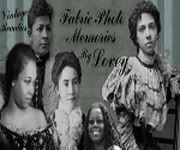

And what sort of miracle kept ladies of the Enlightenment from falling
out of the low-cut scoop neck bodices that were all the rage? As it
turns out, nothing really did….

Eighteenth century France was a good time for the nipple – not so much
for legs. Flashing an ankle or a knee was far more shocking than
exposing cleavage, which said more about your status in society than
your sexuality. On the contrary, exhibiting ones youthful-looking
breasts implicated the innocence and purity of woman who hadn’t yet
nursed a child and therefore (in theory) hadn’t yet been deflowered.

Alternatively, breasts could also be used in portraiture to communicate a
lady’s maternal nature towards her humble servants. The exposure of one
breast typically symbolised high birth and strong moral character.
There was no shame and no explicit message of sexual availability.


But their nakedness wasn’t just reserved for the canvas. In the 17th and
18th centuries, nipple spillage was an everyday occurrence for queens
and courtiers and everyday women of society. Intentional or
unintentional, either way, it just wasn’t a big deal – akin perhaps to
seeing an exposed bra strap today.

Corsets pushed the breasts upwards almost at level with the arm pits and
the latest fashions were cut so low that applying nipple make-up or
nipple rouge became a part of some women’s beauty routine at the vanity
table.

Voltaire’s mistress, Emilie du Chatelet, both an intellect and
fashionista of her day, was famous for her rouged nipples and flamboyant
low cut dresses. Numerous caricatures from the period appear to confirm
the look was so widely adopted that society started to poke fun at its
fashion victims.


If a woman were to show both breasts however, in portraiture or in
public, this generally hinted something else about her virtues and
social standing. Nell Gwyn was the long-time mistress of King Charles II
and one of the most celebrated actresses of her day. She was painted
with both breasts fully exposed, which was more common in the costumed
world of theatre, plays and ballets.

Nell was painted in 1860 by Simon Verelst, but the painting was altered
in the 19th century to cover up her nudity. It has since been restored
and now hangs in the National Portrait Gallery. A lot of art was indeed
altered, censored or even destroyed to put the nipple back in its box so
to speak when the puritanical sex-shaming Victorians decided to ruin
the fun.

You can usually spot the “fig leafing” giveaways in art – an extra sash
across the chest, a cleverly placed rose held close to the heart or just
a bad paint job; numerous tricks were used to cover up history’s
exposed nipple. That censorship has been carried through to modern times
and social media’s banning of the nipple today arguably keeps us with
one foot in the dark ages of sexual prejudice.


Even history is telling us: Free the nipple!
Now, go make something beautiful!
¨)
¸.•´¸.•*´¨) ¸.•*´¨)
(¸.•´ (¸.•´) Tristan
¸.•´¸.•*´¨) ¸.•*´¨)
(¸.•´ (¸.•´) Tristan

Jean-Paul Gautier - Paris - July 4, 2018
















































































